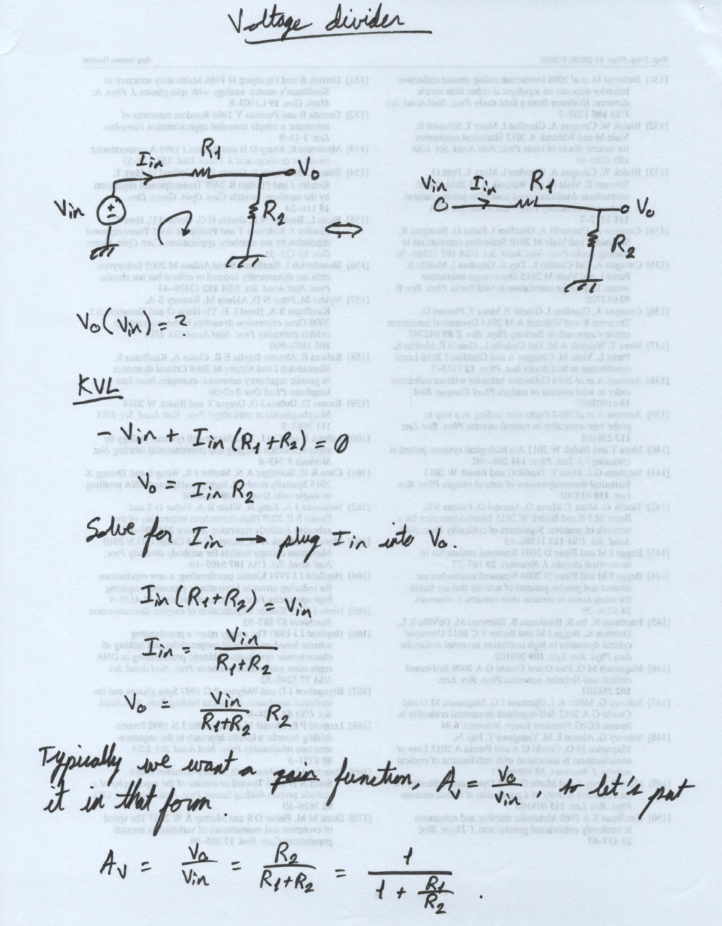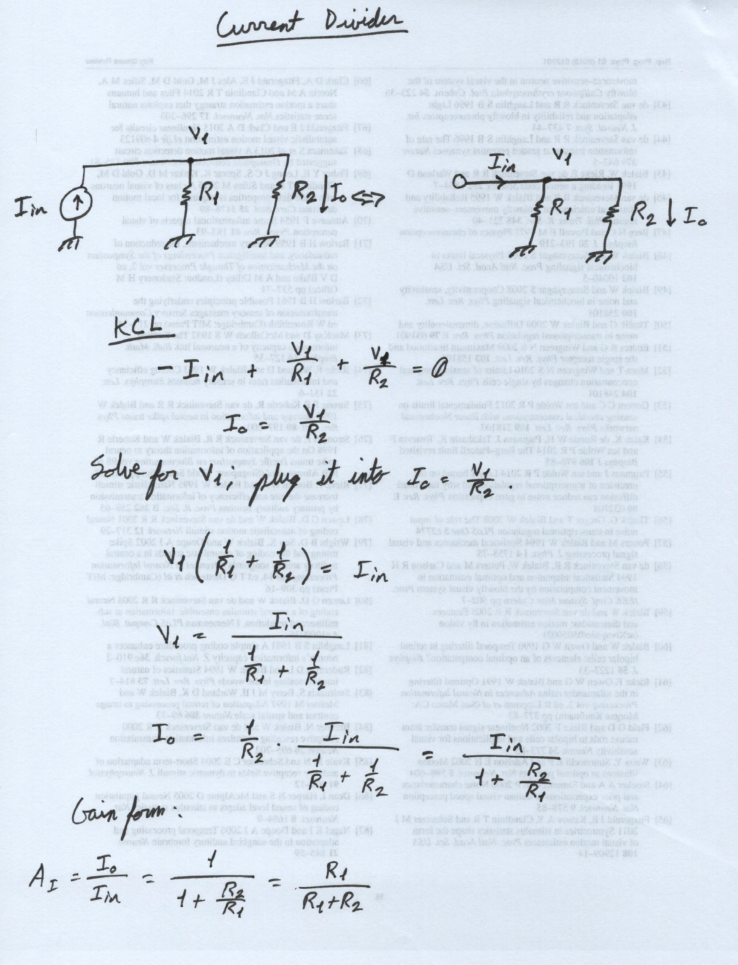Analog Circuits

Lesson 1.9: Voltage dividers and current dividers
These build on the ideas of series and parallel to get some general expressions you can use in a lot of circuits. Many circuits are just sequences of divider circuits strung together.
Voltage divider derivation
Like in the last lesson, it's easier to just show the circuit and the equations than it is to explain it all. We're still just applying KVL, KCL, and Ohm's Law.
In this case, we want to find the output voltage as a function of the input voltage. We can use the result to write answers for sub-circuits down without having to go through the derivation again.

The output voltage of a voltage divider circuit is \[ V_o = V_{in} \frac{R_2}{R_1 + R_2} = \frac{1}{1 + \frac{R_1}{R_2}}. \]
Current divider derivation
Same line of reasoning as for the voltage divider.

The output voltage of a current divider circuit is \[ I_o = I_{in} \frac{R_1}{R_1 + R_2} = \frac{1}{1 + \frac{R_2}{R_1}}. \]
Bottom line. Know the final results for the voltage and current divider circuits.
If you found this content helpful, it would mean a lot to me if you would support me on Patreon. Help keep this content ad-free, get access to my Discord server, exclusive content, and receive my personal thanks for as little as $2. :)
Become a Patron!